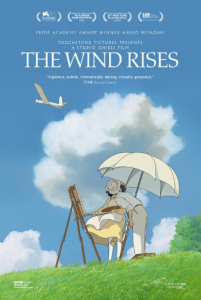 A bittersweet and fitting end to his long-lasting animation career, The Wind Rises is truly one of Hayao Miyazaki’s best artistic works.
A bittersweet and fitting end to his long-lasting animation career, The Wind Rises is truly one of Hayao Miyazaki’s best artistic works.
Equally visually appealing and dream-like, The Wind Rises tells the true story of Jiro Horikoshi, a Japanese engineering student from the 1920’s. Jiro is a country boy who dreams of one day building beautiful aircrafts. He is a gifted designer and bookish student. The film is set against the backdrop of early-20th century Japan, and follows the historical events of the era. This includes a heartbreaking but moving depiction of Great Kanto Earthquake of 1923. This is easily one of the best parts of the film, as it swiftly carries the viewer from observing beauty to destruction. The art during the scenes in the aftermath of the earthquake are strangely captivating, and leave the viewer feeling antsy as they wait to find out what happens next. The scene as a whole shows a vivid portrayal of kindness in a shaken and burning city, as Jiro helps along strangers he will come to know later in his life
The story is set against the backdrop of natural disaster, economic crises, and later a sense of urgency as the world gears up for the Second World War. The plot is inspiring and emotional, fueled by history and tragedy and does an amazingly good job of standing on it’s own without the support of fantastical elements seen in other Studio Ghibli films, (since it was founded in 1985, Studio Ghibli has produced multiple animated works.)
Despite the serious tone it carries overall, the viewer feels a strange sense of whimsy throughout the film, mostly through seeing Jiro’s reoccurring dreams staring Giovanni Caproni, an Italian engineer, and the scene in which he marries his fiancé Naoko. The marriage scene in particular had a lasting effect on me, and I found myself tearing up throughout at how touching it was.
Overall, The Wind Rises is touching and inspiring; it caught my attention and kept it through the entire film. At the end I was sad it was over, and found myself wishing that, hopefully, Miyazaki would come out of retirement once more to create more beautiful works such as these.
-By Meredith Norman

